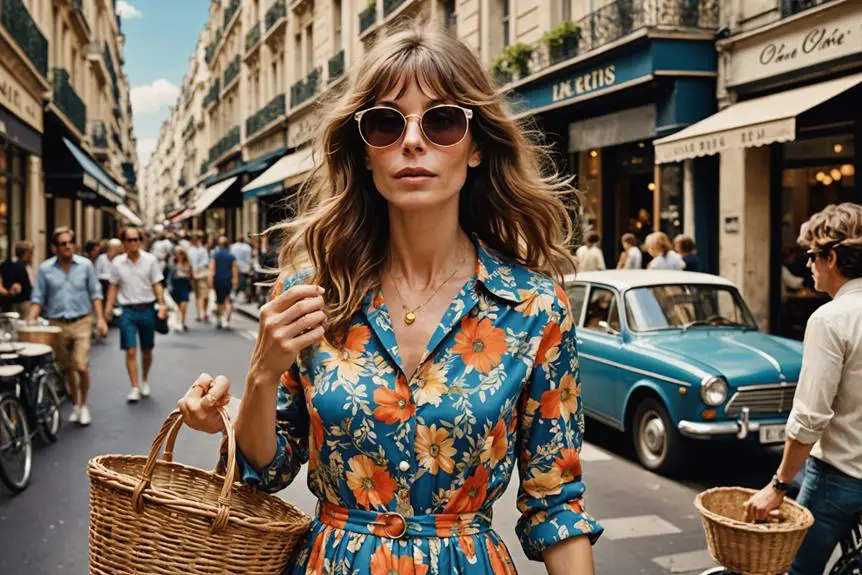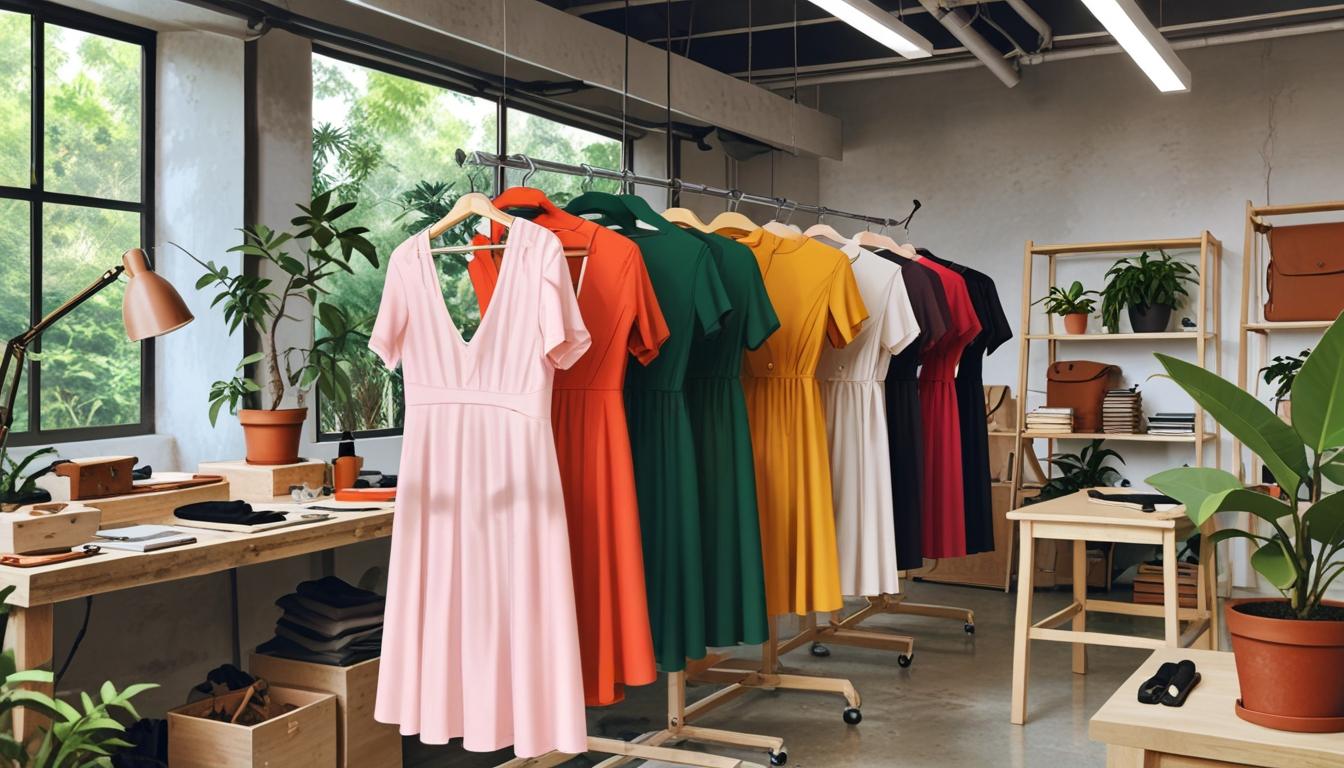When you think of Jane Birkin, her fashion choices likely come to mind as much as her cinematic roles. You can see how her sheer dress at the *Slogan* premiere or the pink velvet gown at Cannes redefined glamour in the 1960s and 70s. Birkin didn't just wear clothes; she created an unforgettable aesthetic that resonated with both elegance and rebellion. As you consider her most iconic looks, it raises the question: what drove her unique style, and how did it influence subsequent generations?
Early Career Influences
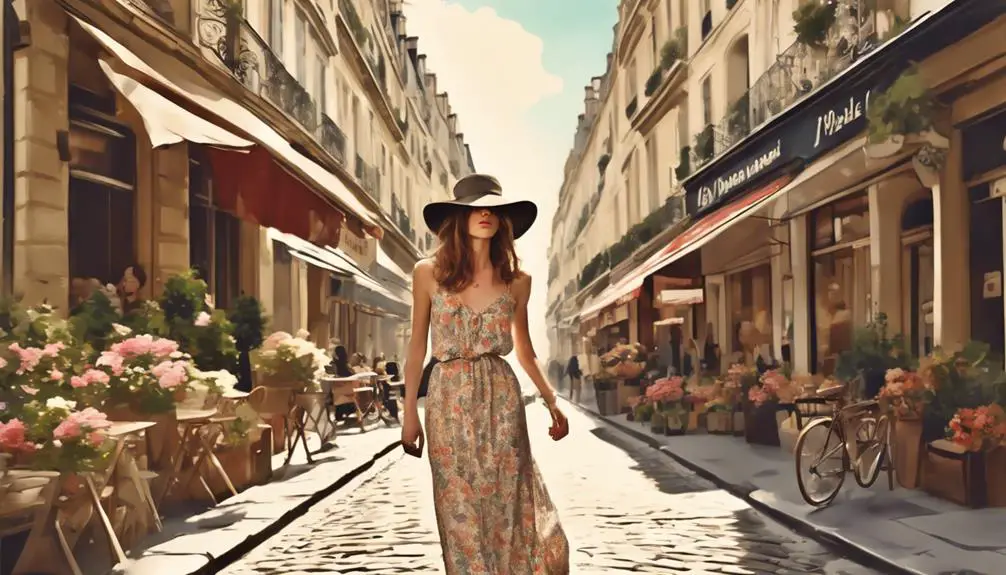
Jane Birkin kicked off her career in the 1960s, and you can see how her early influences shaped her iconic style. With memorable roles in British films like *Kaleidoscope* and *Wonderwall*, Jane emerged as a fashion icon, blending elements of youthful charm and sophistication that defined the French girl aesthetic. At just 18, she captivated audiences in *Carving a Statue*, showcasing a French-inspired uniform that hinted at her future influence on fashion.
Her relationship with musician Serge Gainsbourg in the late 1960s played a pivotal role in her style evolution. Together, they embodied the casual yet chic vibe of the era, which resonated with the fashion landscape. Jane's signature look consisted of white t-shirts, patchwork denim, and minidresses, each piece echoing her philosophy that fashion is a "cocktail" of different styles. This playful approach not only shaped her wardrobe but also inspired countless fashion enthusiasts.
In those formative years, Jane's effortless ability to mix high and low fashion solidified her status as a style icon. She demonstrated that dressing could be fun, approachable, and authentically individual. Whether she was donning a simple dress or pairing denim with luxe accessories, Jane's early career influences laid the groundwork for her enduring legacy in the fashion world. As you explore her evolution, it's clear that her unique style choices continue to inspire generations, proving that true fashion is timeless.
The Birth of the Birkin Bag
The iconic Birkin bag, a staple of luxury fashion, was born from a serendipitous encounter between Jane Birkin and Hermès' Jean-Louis Dumas in 1984. While on a flight, you can imagine the casual conversation that sparked a revolution in handbag design. Birkin expressed her need for a stylish yet practical bag, and Dumas listened intently. The result? A masterpiece that balances elegance and functionality, crafted to be larger than the Kelly bag but smaller than a suitcase, with various pockets to meet the demands of modern women.
The Birkin bag quickly became a status symbol, its exclusivity cemented when a diamond-encrusted version sold for $380,000 at a 2017 Christie's auction. This staggering price showcased not just the bag's luxurious appeal but also its cultural significance in the fashion world. Jane Birkin didn't stop there; she showcased her philanthropic spirit by donating royalties from the bag's sales to various charities annually, further enhancing its allure.
Today, the Birkin bag remains a coveted item, with waitlists often exceeding several years for purchase. Its design, steeped in history and tailored for the sophisticated woman, guarantees that it continues to represent luxury and status. When you think of the Birkin, you're not just thinking of a handbag; you're thinking of an icon that redefined what a luxury accessory could be, embodying both style and substance in every stitch.
Iconic Fashion Statements
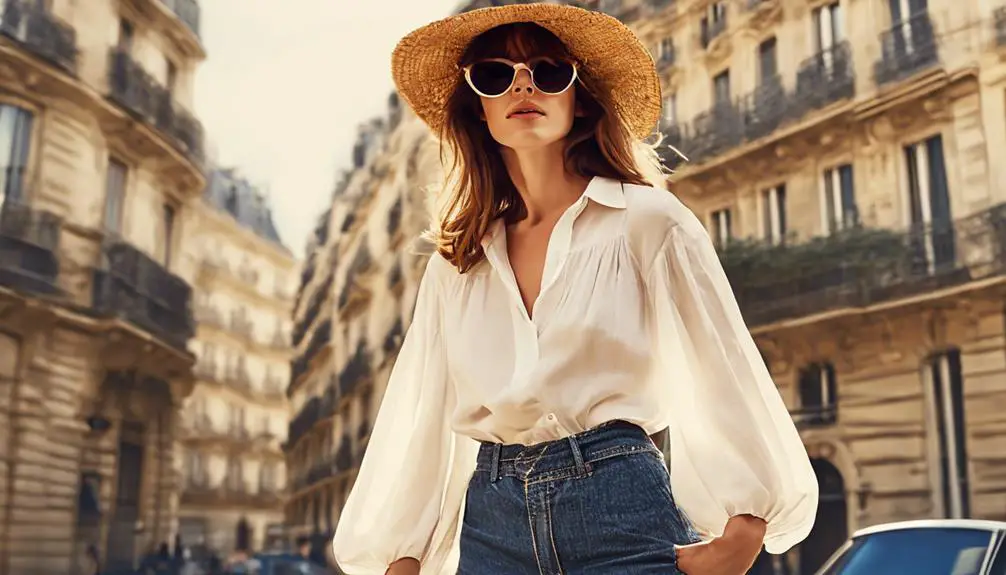
Iconic fashion statements from the 1960s and 1970s showcase Jane Birkin's unique style and enduring influence on the fashion world. One of her most memorable looks was the sheer dress she wore to the *Slogan* film premiere in 1969, a daring piece that inadvertently set the stage for sheer styles embraced by modern celebrities like Kate Moss and Hailey Bieber. This bold choice not only highlighted Birkin's fearless approach to fashion but also cemented her status as a trendsetter.
At the 1974 Cannes Film Festival, Birkin dazzled in a radiant pink velvet gown, accentuated with a pearl belt and her signature basket bag. This ensemble perfectly showcased her elegance and became one of her most beloved looks. That same festival saw her in a shimmering layered dress, paired with sheer blue tights and strappy heels, embodying her adventurous spirit and love for bold fashion statements.
Birkin's iconic style continued to shine, as evidenced by the fashionable knitted mini dress she donned in 1968, which captured the essence of 60s fashion. This look inspired countless future generations to embrace mini styles, leaving an indelible mark on women's fashion. Even at the Elysee Palace in 2004, her elegant black dress during a state banquet for Queen Elizabeth II epitomized fashion royalty, solidifying her legacy as a true fashion icon. Birkin's ability to blend elegance with daring choices has made her a timeless figure in style history.
Red Carpet Highlights
Red carpet moments have long been a stage for showcasing glamour and style, and Jane Birkin certainly made her mark with unforgettable looks. At *The Godfather* premiere in 1972, she wowed the crowd in a stunning black feather-trimmed dress, demonstrating how elegance can effortlessly steal the spotlight. Fast forward to the 1974 Cannes Film Festival, where she turned heads in a pale pink velvet gown featuring a daring thigh-high slit, perfectly accessorized with pearls and a chic scarf. This was a moment that solidified her status as a style icon, capturing the essence of high fashion.
In 1986, during a television performance in France, Birkin dazzled audiences in an asymmetrical sequin dress, showcasing her bold fashion choices. Her ability to captivate, even on the red carpet, set her apart from her contemporaries. She also made waves in the 1970s with her signature look of a t-shirt and flared jeans, effortlessly blending comfort and sophistication. Whether she paired her jeans with high socks or a stylish coat, she always exuded a casual chic vibe.
One of her most memorable appearances came at a state banquet for Queen Elizabeth II in 2004, where she graced the red carpet in a long black gown and matching coat, epitomizing fashion royalty. Each moment on the red carpet reflects not just her impeccable taste, but also her unique ability to redefine glamour, leaving an indelible mark on the world of fashion.
Everyday Chic Styles
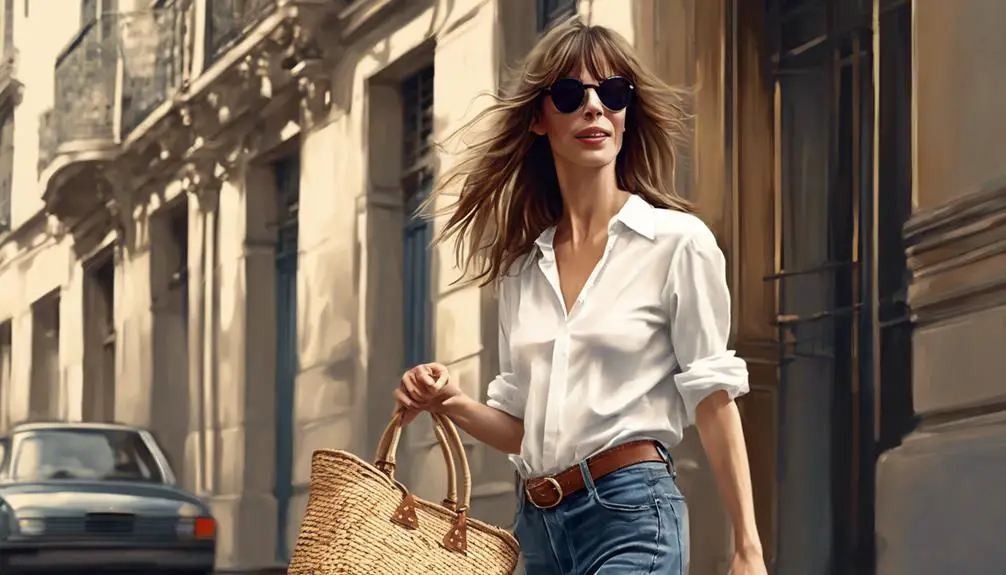
Everyday chic embodies a relaxed yet stylish approach to fashion, and Jane Birkin mastered this art with her effortless ensembles. You can easily channel her iconic style by incorporating classic pieces like simple white t-shirts and high-waisted flared denim into your wardrobe. This timeless combination not only emphasizes comfort but also highlights elegance, allowing you to feel confident and put-together in any casual setting.
Imagine pairing a lightweight sweater with your favorite jeans on a cool evening—this layering technique was one of Birkin's go-to strategies. It adds depth to your outfit while keeping you cozy, a perfect blend of style and functionality. For a touch of sophistication, consider a delicate lace top peeking from underneath your sweater, bringing an element of femininity to your everyday chic look.
Accessories are key to completing your ensemble. Birkin's signature woven basket bags reflect her practical yet stylish approach, providing the perfect solution for carrying your essentials without sacrificing flair. These bags seamlessly complement various outfits, making them a versatile choice for any occasion.
Emulating Jane Birkin's everyday chic style is all about balancing comfort and sophistication. By mixing and matching these classic pieces, you'll not only capture her effortless vibe but also cultivate your unique style. So, next time you're getting dressed, remember: a simple white tee, flared denim, and a touch of creativity can make all the difference in achieving that iconic look.
Legacy and Cultural Impact
Jane Birkin's influence goes far beyond her chic day-to-day outfits; she became a cultural icon of the 1960s and 1970s, embodying the free-spirited counterculture movement. Her unique fashion choices, characterized by a perfect blend of casual elegance and bohemian chic, set trends that still resonate today. Birkin's style wasn't just about clothing; it reflected a lifestyle that celebrated freedom and individuality, inspiring countless modern fashion icons.
Her impact extended beyond fashion into the domains of music, art, and literature, as she served as a muse for various artists and designers, including the renowned Jean-Paul Gaultier. The Birkin bag, introduced by Hermès in 1984 and named after her, has become one of the most coveted luxury items, symbolizing status and exclusivity. This iconic accessory perfectly encapsulates her legacy, as it's not just a handbag; it's a statement of style and sophistication.
Moreover, Jane Birkin used her platform to advocate for humanitarian causes, promoting pro-democracy efforts and women's rights. This commitment to social issues further solidified her influence on culture and society, making her not just a fashion icon but a powerful voice for change. As you look back on her life and contributions, it's clear that Jane Birkin's legacy is multifaceted, intertwining style with a deep sense of purpose, ensuring her impact will be felt for generations to come.
Fashion Evolution Over Time
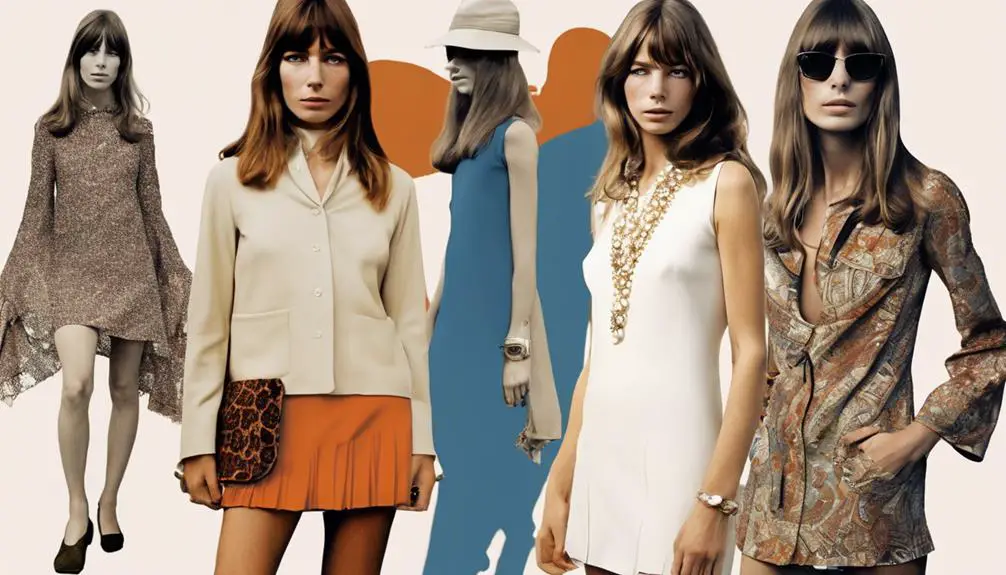
Fashion has a remarkable way of evolving, and Jane Birkin's style journey exemplifies this transformation beautifully. As an actress and singer, she became an icon in the 1960s, enchanting audiences with her youthful charm that featured crewneck sweaters and cropped pants, which highlighted her influence on French-inspired styles. As time passed, her fashion sense matured; by the late 1960s, she effortlessly blended structured and soft elements, sporting a chic black vest with ruffled blouses in *Wonderwall* (1967).
Throughout the 1970s, Birkin fully embraced a bohemian aesthetic, showcasing flowing fabrics and vintage finds that defined her iconic style moments. Relaxed dresses and chic denim combinations became her staples, reflecting the laid-back vibe of the era. One of her most memorable looks, the daring naked dress at the *Slogan* premiere in 1969, illustrated her boldness and inadvertently set trends for generations to come.
Birkin's signature style, characterized by effortless chic and unique choices, paved the way for her lasting legacy in fashion. Her influence is perhaps best encapsulated in the Birkin bag, introduced in 1984, which symbolized luxury and continues to inspire trends even decades later. Whether she was donning a classic wool coat or a statement piece, Jane Birkin's evolving fashion narrative remains a timeless source of inspiration, reminding us that true style never goes out of season.
Frequently Asked Questions
What Is Jane Birkin's Style Called?
You'd call Jane Birkin's style "bohemian chic." It blends effortless elegance with vintage flair, showcasing a Parisian influence. Her artistic expression creates a timeless appeal, inspiring many to embrace casual sophistication in their wardrobes.
How Did Jane Birkin Influence Fashion?
You see how Jane Birkin influenced fashion with her effortless blend of 1960s fashion and French chic. Her casual elegance, the iconic Birkin Bag, and timeless accessories shaped celebrity influence and inspired countless trends in style.
What Was Jane Birkin Famous For?
You know Jane Birkin was famous for her Bohemian lifestyle, her roles in French cinema, her music career, and her high-profile celebrity relationships. Plus, she's remembered for inspiring the coveted Birkin Bag and leaving a cultural impact.
Is Jane Birkin a Fashion Icon?
Yes, you can definitely consider Jane Birkin a fashion icon. Her Birkin bag embodies timeless elegance, while her Parisian chic and bohemian flair exude vintage appeal, showcasing a significant cultural impact that continues to inspire today's trends.
